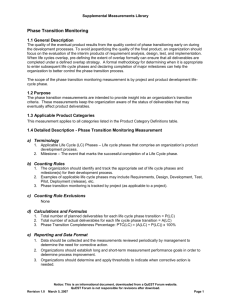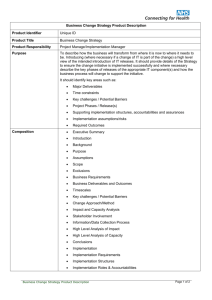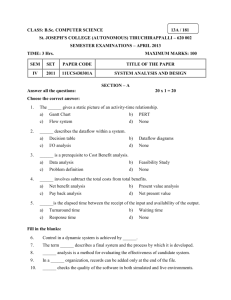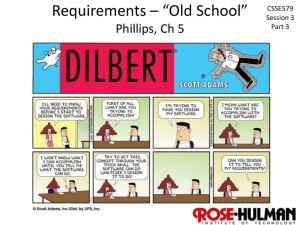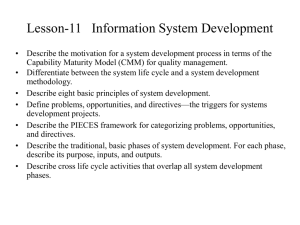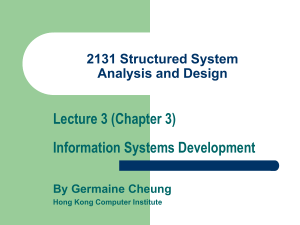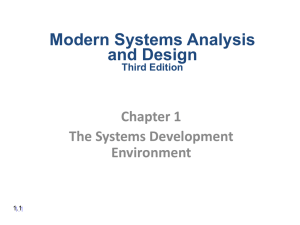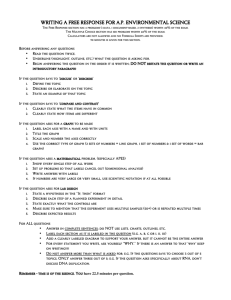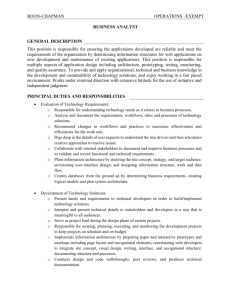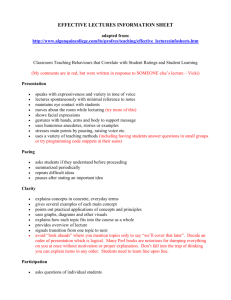Ch3 Reading Quiz
advertisement
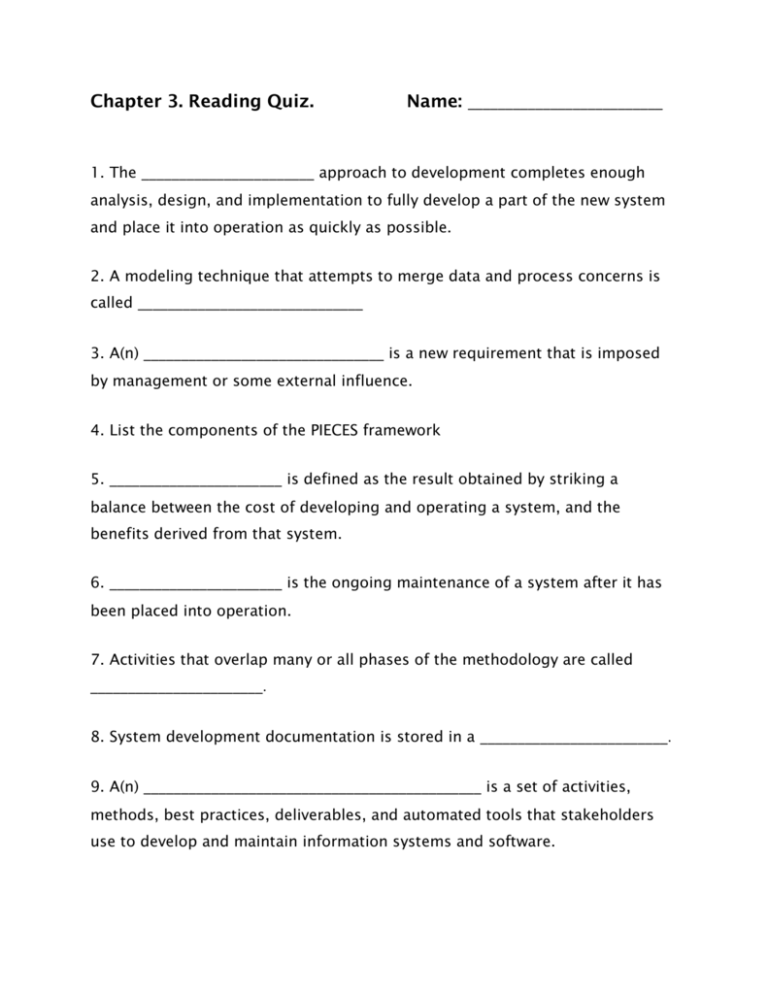
Chapter 3. Reading Quiz. Name: __________________________ 1. The _______________________ approach to development completes enough analysis, design, and implementation to fully develop a part of the new system and place it into operation as quickly as possible. 2. A modeling technique that attempts to merge data and process concerns is called ______________________________ 3. A(n) ________________________________ is a new requirement that is imposed by management or some external influence. 4. List the components of the PIECES framework 5. _______________________ is defined as the result obtained by striking a balance between the cost of developing and operating a system, and the benefits derived from that system. 6. _______________________ is the ongoing maintenance of a system after it has been placed into operation. 7. Activities that overlap many or all phases of the methodology are called _______________________. 8. System development documentation is stored in a _________________________. 9. A(n) _____________________________________________ is a set of activities, methods, best practices, deliverables, and automated tools that stakeholders use to develop and maintain information systems and software. 10. A ________________________________________________ is a contract with management and the user community to develop or enhance an information system, specifying vision, scope, constraints, user requirements, schedule, and budget. 11. The ______________________________________________ is a framework to assess the maturity level of an organization's information systems development and management processes and products. 12. A(n) ____________________________________ divides the life of an information system into two stages: systems development and systems operation and support. 13. A(n) __________________________________________ is a very formal and precise system development process that defines a set of activities, methods, best practices, deliverables and automated tools for system developers and project managers to use to develop and maintain most or all information systems and software. 14. With the ______________________________________ approach to systems development, multiple feasibility checkpoints are built into any systems development methodology. At each feasibility checkpoint, all costs are considered sunk (i.e., not recoverable). Thus, the project should be re-evaluated at each checkpoint to determine if it remains feasible to continue investing time, effort and resources. 15. ________________________________________ asks the question: Does the staff have the technical expertise to design and build the solution? 16. ________________________________________ asks the question: Is the solution cost-effective such that the benefits outweigh the costs? 17. _______________________________________ asks the question: Can the solution be designed and implemented within an acceptable time period? 18. _________________________________________ activities are activities that overlap many or all phases of the methodology. 20. _______________________________ is the formal process of using research, interviews, meetings, questionnaires, sampling and other techniques to collect information about systems, requirements and preferences. 21. ______________________________________ is the activity of communicating findings, recommendations, and documentation for review by interested users and managers. It may be written or verbal. 22. ___________________________________ is the measure of how beneficial the development of an information system would be to an organization. 23. _______________________________________________ techniques emphasize the drawing of models to help visualize and analyze problems, define business requirements, and design information systems. 24. ___________________________________________ techniques emphasize extensive user involvement in the rapid and evolutionary construction of work prototypes of a system to accelerate the system development process. It is sometimes called a spiral approach because you repeatedly spiral through the phases to construct a system in various degrees of completeness and complexity. 25. A(n) ____________________________________ is a small-scale, representative or working model of users' requirements or a proposed system design for an information system. 26. A(n) _________________________________________ software package is a fully integrated collection of information systems that span most basic business functions required by a major corporation. These systems include accounting and finances, human resources, sales and procurement, inventory management, production planning and control, and so on. 27. __________________________________________________ are software programs that automate or support the drawing and analysis of system models and provide for the translation of system models into application programs. 28. A(n) ____________________________________ is a system developers' database. It is a place where developers can store models, detailed descriptions and specifications and other parts of systems development. Synonyms include dictionary and encyclopedia. 29. ___________________________________________ requires the systems analyst to draw system models either from scratch or from templates. The resulting models are then automatically transformed into program code. 30. ___________________________________________ allows a CASE tool to read existing program code and transform that code into a representative system model that can be edited and refined by the systems analyst. 31. _________________________________________________ are integrated software development tools that provide all the facilities necessary to develop new application software with maximum speed and quality.
